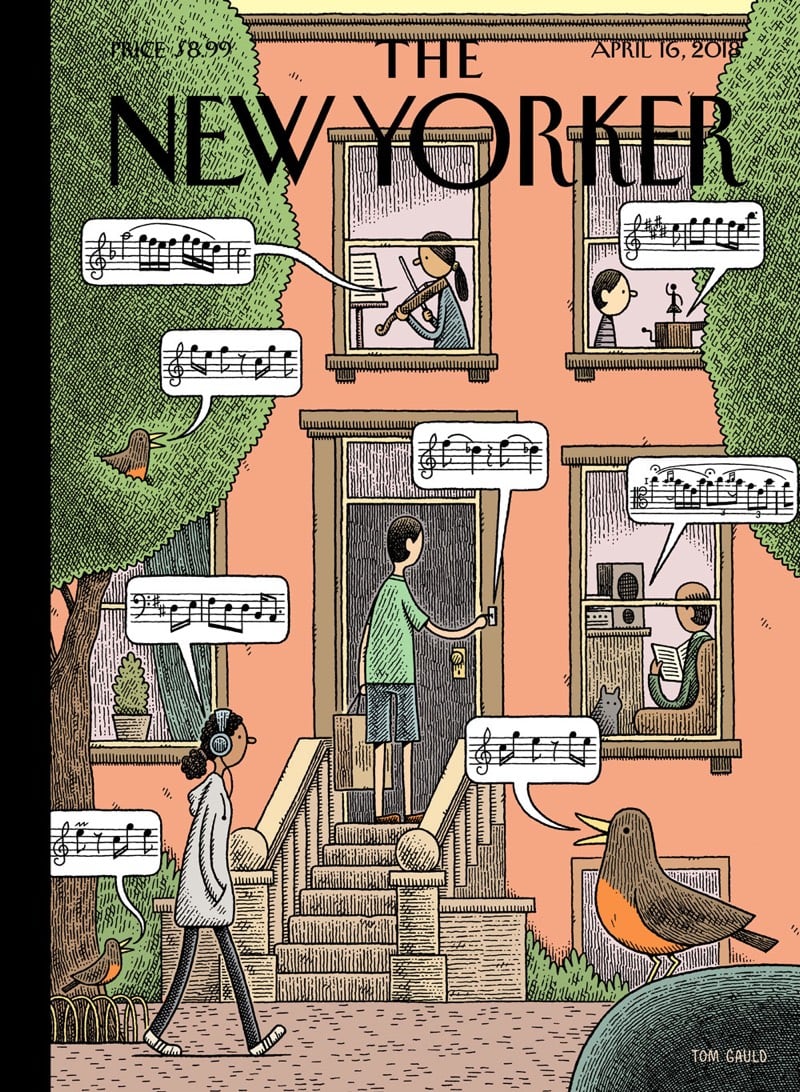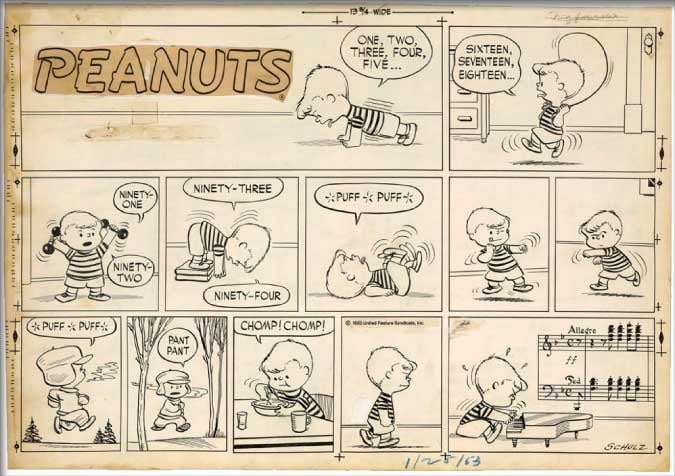The New Yorker’s musical magazine cover

The New Yorker has a fun cover this week from cartoonist Tom Gauld. The New York street scene shows bits of music being played and listened to by people and birds and if you click through to the interactive version, you can listen to what each snippet of musical notation sounds like.
In his early sketches, Gauld had only vague notions of the music he’d like to include, and “placeholder nonsense” in the speech bubbles. “If, like me, you’re musically illiterate, then the notes give a suggestion of what’s going on sonically,” he said. “But I also wanted the scores to make sense to those who can read music.”
To achieve that goal, he enlisted the help of fact checker Fergus McIntosh, a veteran chorister. Together, the duo struck upon a repertoire that includes Vivaldi’s “Spring”; Stravinsky’s “The Rite of Spring”; Beethoven’s “Spring Sonata”; the folk song “One Morning in Spring”; and birdsong from the American robin, which tends to appear in springtime after local migration.
Found this via Austin Kleon, who remarks that Charles Schulz was similarly faithful in using accurate musical notation in Peanuts cartoons.

When Schroeder pounded on his piano, his eyes clenched in a trance, the notes floating above his head were no random ink spots dropped into the key of G. Schulz carefully chose each snatch of music he drew and transcribed the notes from the score. More than an illustration, the music was a soundtrack to the strip, introducing the characters’ state of emotion, prompting one of them to ask a question or punctuating an interaction.
Schulz used music so extensively in some of his strips that they didn’t really make much sense if you didn’t know how to read music:

When Beethoven gave the Hammerklavier to the publisher, he bragged, “Now you will have a sonata that will keep the pianists busy when it is played 50 years hence.” In this Sunday strip, Schulz most fully develops the idea of the preparations required to storm “Mount Everest.” Before marching to the piano with determination, Schroeder prepares himself for this mighty undertaking with seven different kinds of exercise and a “carb-loading” bowl of cereal, almost as if he were preparing to climb a mountain!





Stay Connected